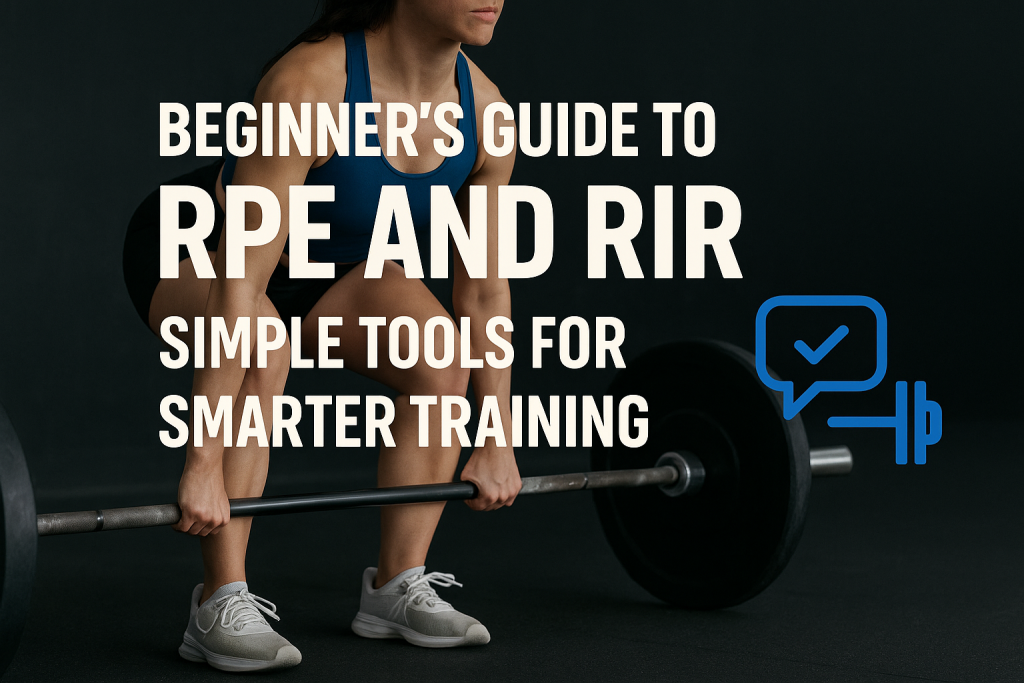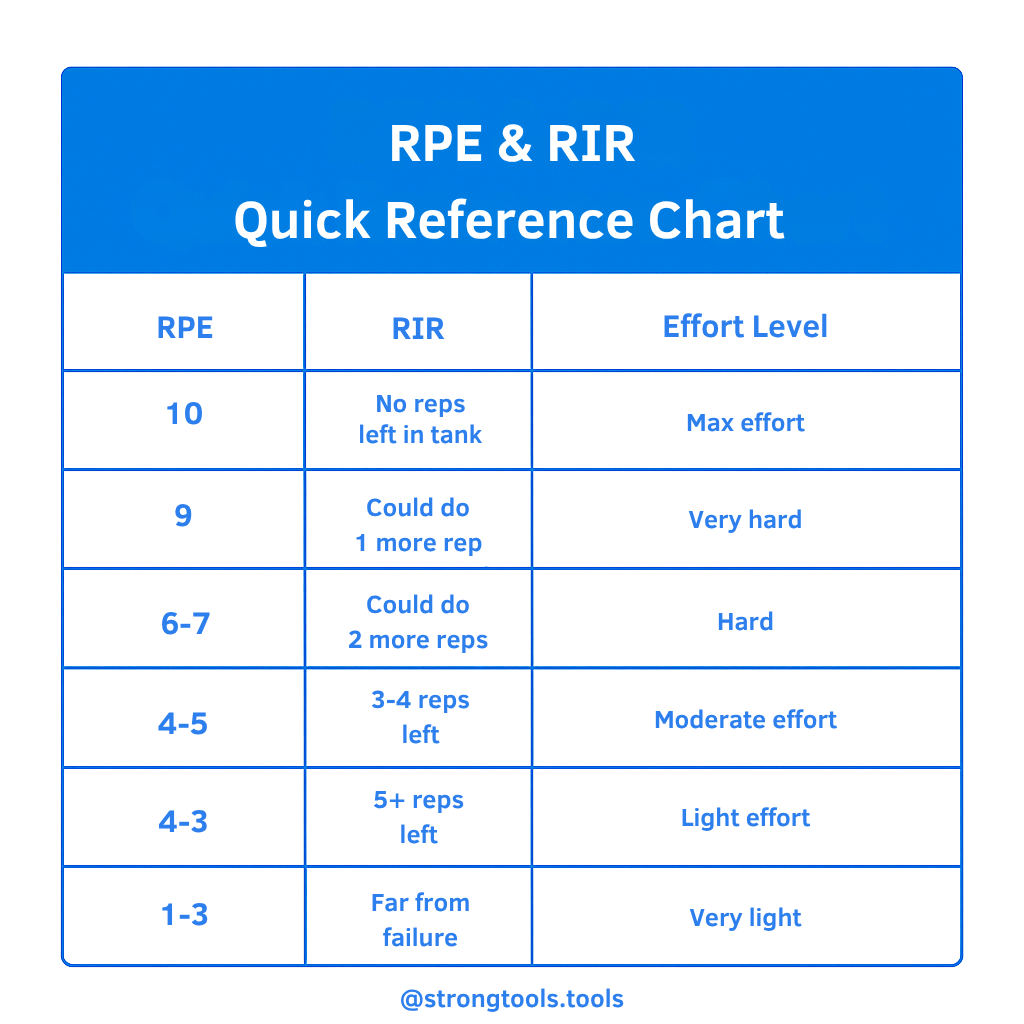Beginner’s Guide to RPE and RIR: Simple Tools for Smarter Training

If you’re new to strength training, you’ve probably seen people talk about RPE (Rate of Perceived Exertion) or RIR (Reps in Reserve) and wondered what in the heck people were talking about. Seeing these terms thrown around without understanding what they mean can make it harder or more intimidating to get started on a strength training program. We’re here to help, and in this article, we’ll explain what they are and how to use them.
RPE and RIR are simple tools that help you measure how hard you’re working—without needing fancy equipment. They’re used by beginners and elite athletes alike to train at the right intensity, avoid burnout, and make consistent progress.
What is RPE?
RPE stands for Rate of Perceived Exertion. It’s a 1–10 scale that measures how hard a set feels:
| RPE | Description | Effort Level |
|---|---|---|
| 10 | Max effort — no reps left in the tank | All-out |
| 9 | Could maybe do 1 more rep | Very hard |
| 8 | Could do 2 reps more | Hard |
| 6–7 | Moderate effort — 3–4 reps left | Comfortable but challenging |
| 4–5 | Light effort — 5+ reps left | Easy warm-up work |
| 1–3 | Very light — far from failure | Recovery work |
It’s subjective — you decide the number based on how it feels — but with practice, it becomes very accurate.
What is RIR?
RIR means Reps in Reserve. Instead of rating effort from 1 to 10, you count how many reps you think you could have done after you finish a set:
- RIR 0 = You couldn’t do another rep (max effort)
- RIR 1 = You could do one more rep if you pushed
- RIR 2 = You could do two more reps
- RIR 3+ = You’re far from failure
RPE and RIR are closely related — an RPE 8 usually means RIR 2, RPE 9 means RIR 1, and RPE 10 means RIR 0.
Why Use RPE and RIR?
Training with only a fixed plan (like “3 sets of 10 reps at 100 lbs”or 3 sets of 10 reps at 80%”) doesn’t account for daily differences in energy, stress, or recovery. Some days you feel great, other days you may feel worn down. A bad night of sleep can make a weight that felt easy one day, feel much heavier on another. RPE and RIR take those kinds of variables into consideration.
Using RPE or RIR allows you to:
- Adjust for good and bad days — lift heavier when you feel strong, go lighter when you need to
- Progress without overtraining — stop before technique breaks down or fatigue gets too high
- Track intensity without maxing out — no need to constantly test your 1-rep max
Research supports using RPE and RIR as reliable ways to manage training load while still getting stronger and building muscle over time.
How to Use RPE and RIR in Your Workouts
- Start by practicing — during your main lifts, guess how many reps you have left at the end of each set.
- Match your target — if your program says “RPE 8,” finish your set when you feel you could do 2 more reps (RIR 2).
- Adjust weight as needed — if the weight feels too easy, add more; if it feels too hard, take some off.
- Log your training — write down your RPE or RIR each set to track trends over time.

Suggested RPE/RIR Targets
| Goal | RPE | RIR |
|---|---|---|
| General strength | 7–9 | 1–3 |
| Hypertrophy (muscle growth) | 7–8 | 2–3 |
| Technique work / recovery | 5–6 | 4–5 |
Key Takeaways
- RPE = how hard the set feels (scale 1–10).
- RIR = how many reps you could still do.
- They work together—RPE 8 ≈ RIR 2.
- Using them helps you train smarter, avoid injury, and progress steadily.
Want a custom-built program that uses RPE or RIR based on your situation and goals? Check out our StrongToolsApp.com to get yours.